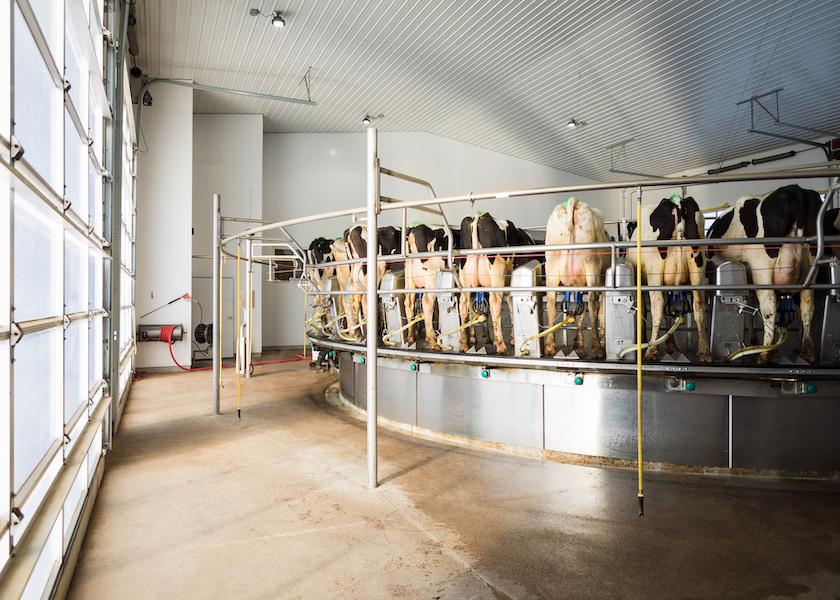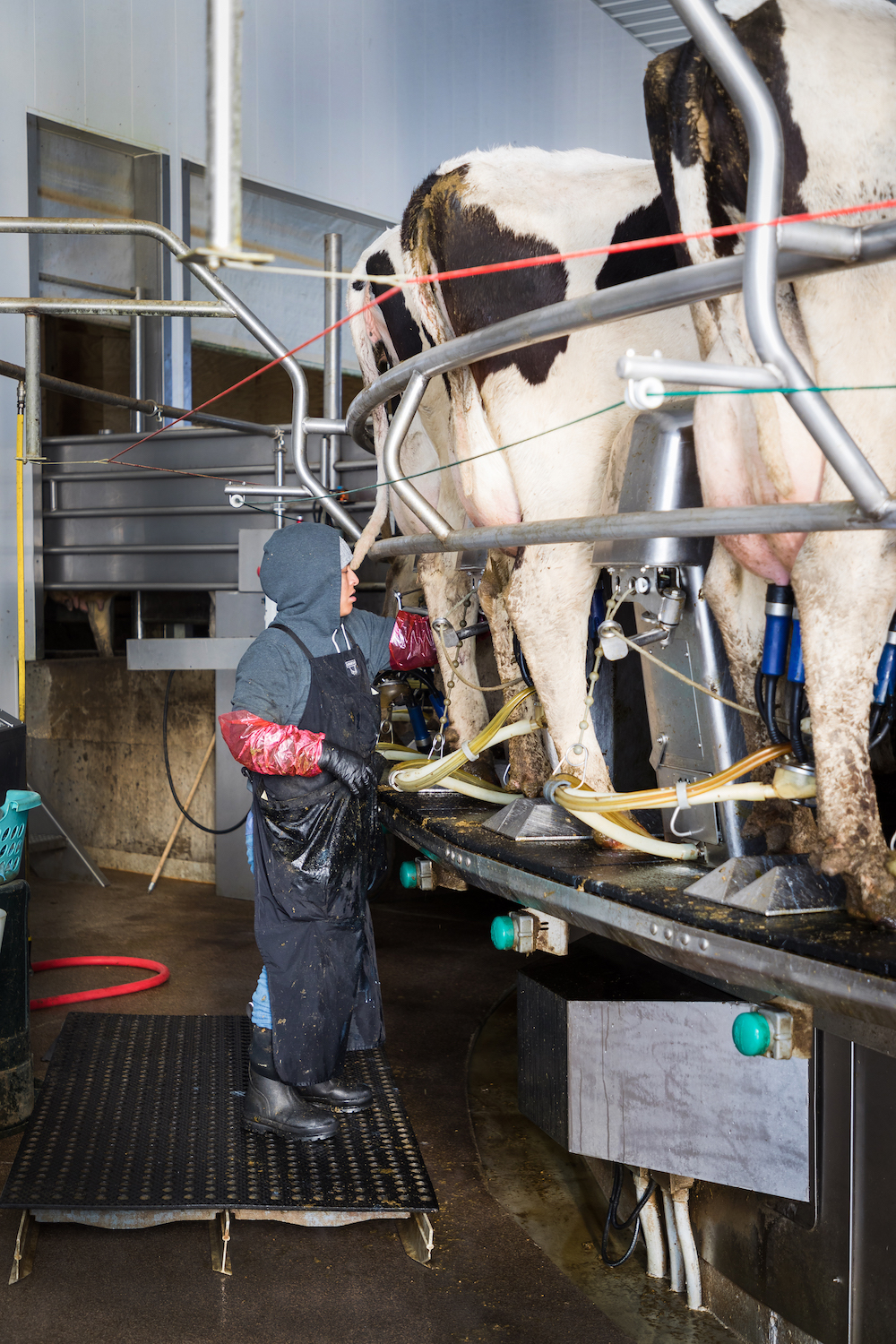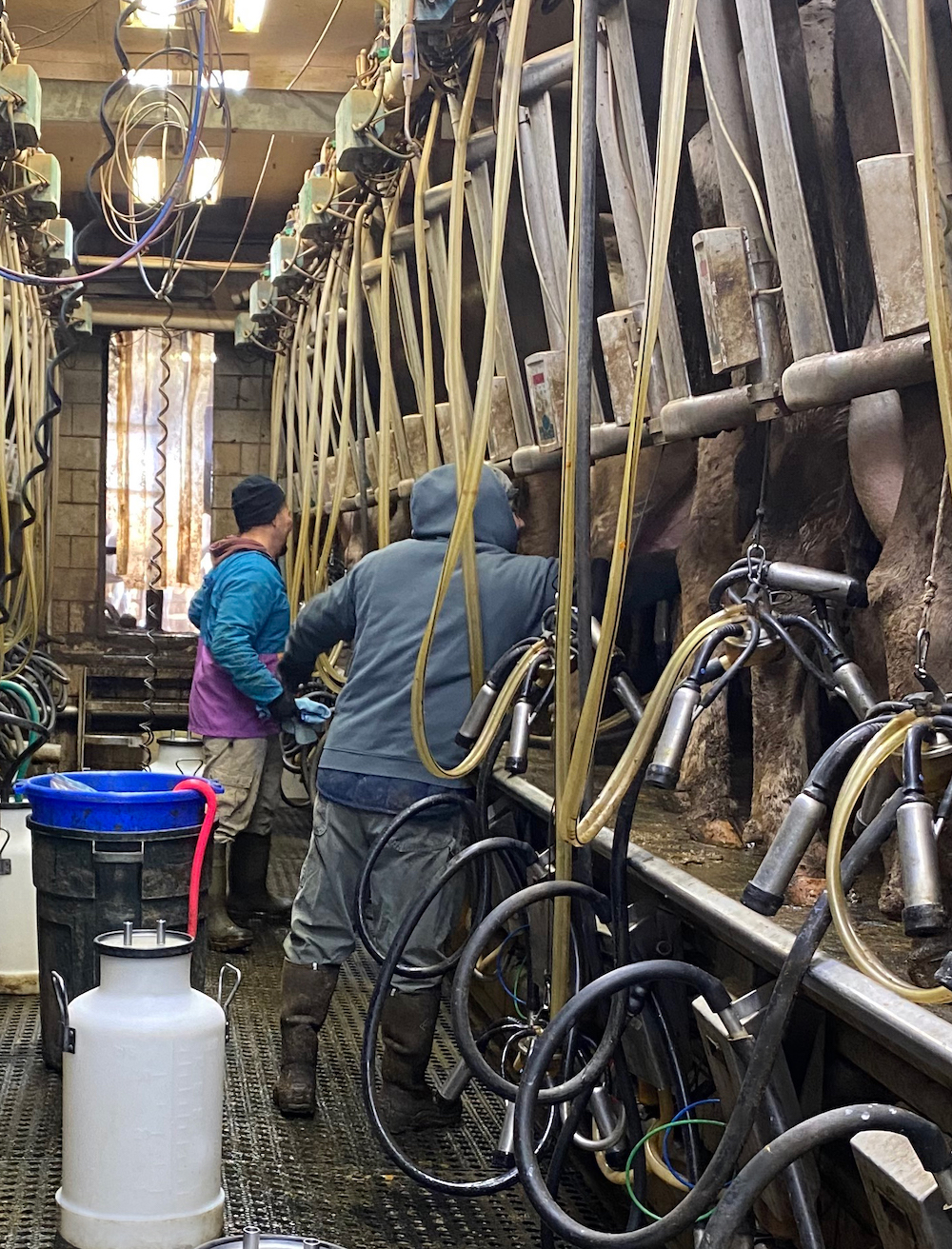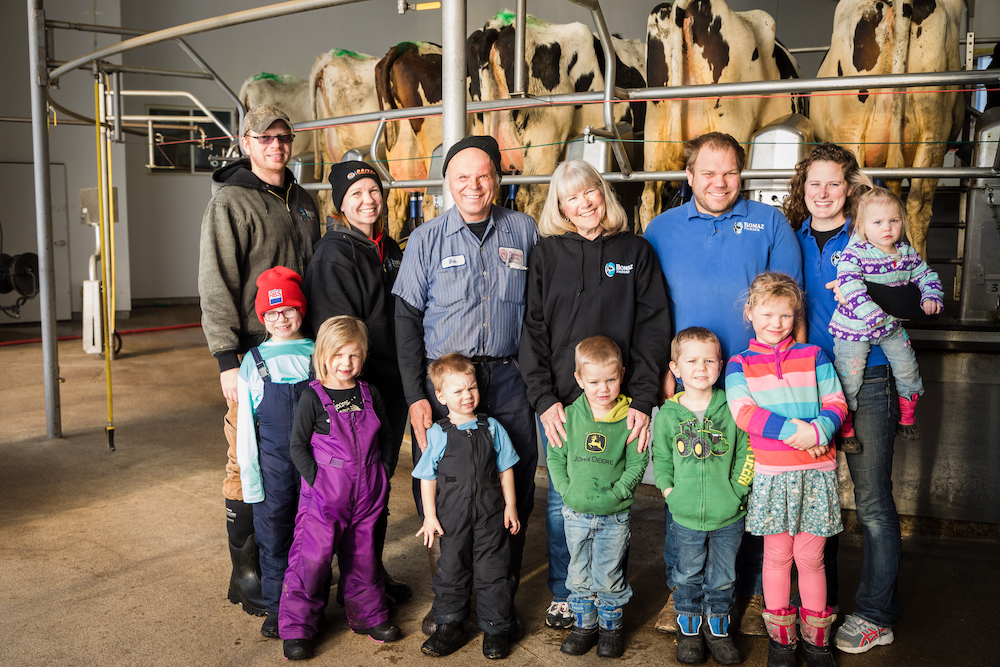Quality Control: Good Habits Produce Better Milk

Whether it’s paying attention to the tiniest detail or taking a step back to look at the big picture, it’s important to understand the ins and outs of what it takes to produce the best milk possible.
Equipment Tune-ups

While there are several factors that impact the quality of milk before it leaves the farm, it’s easy to dismiss the significance milking equipment plays. According to Brent Wilson, with Wilson Centennial Farm LLC, producing quality milk is the result of analyzing even the smallest details.
“We have equipment services scheduled regularly to make sure everything is running smoothly,” he says. “It seems like there’s not a week that goes by we don’t have our local dealer come out and tweak some of the things.”
Besides focusing on the milking equipment in the parlor, Wilson also uses a milk pasteurizer to help control milk quality.
“Twenty years ago, we were struggling with salmonella dublin, so that’s when we went to feeding pasteurized milk to our calves,” he says.
The pasteurizer uses 70 gal. to 80 gal. of milk for each feeding, and despite his efforts to keep mastitis at bay, Wilson jokes he always seems to have enough high SCC cows to feed the calves.
“Using the pasteurizer is one way we help manage our cell count,” Wilson says. “You’re always going to have some mastitis. We just try to keep that milk from going to waste.”
At Bomaz Dairy in Hammond, Wis., Annette Schalla’s team also homes in on the details. For example, a specific employee is tasked to routinely check milking equipment each week to ensure there’s no problems.
“We have one of our guys start his morning shift by checking all of the hoses on the units and replacing parts that are worn down. He also checks the air filters,” she says. “We have a parts room with grab-and-go replacements that makes things easier to change.”
Monitor Cleanliness

When working alongside his employees in the parlor, Wilson makes sure they stay on top of cleanliness. This means spraying off milk claws throughout their shifts and scraping away manure from underneath the cows. Again — it’s the details that matter day in and day out.
“We usually milk one or two fresh heifers each day and they like to kick off the units,” Wilson says. “The employees have to make sure to keep the floor clean to prevent that unit from getting dirty. When cows do kick off the unit, it’s easy to just pick it up and put it back on, but you have to teach [the employees] to rinse it off, dry it off and fix the pulsator before putting it back on.”
Similarly, Schalla and her teammates work to make sure rotary stalls are regularly cleaned to prevent bacteria from spreading.
“That was one of the learning curves we had when we switched from the parallel to the rotary,” she adds. “When we were in the parallel, it was pretty
simple to clean the stalls between each group of cows. Now that the cows are constantly on the carousel, it’s a little more difficult. So, we try to rinse off any empty stalls when they come around.”
While the Bomaz operation hasn’t had any issues with keeping their equipment clean, Shalla notes there would be a few places she’d check first if their preliminary incubation (PI) count started to rise.
“Before, I definitely would have started by looking at the bulk tanks to make sure that system was cleaning properly,” she says. “Now, we would probably start with looking at the meters to make sure we don’t have any buildup. We’d also use our equipment dealer as a resource to see if he’d notice anything we might have missed.”
For Wilson, he analyzes his milk quality counts daily to make sure he doesn’t miss any clear issues. This data serves as a reflection of the cleanliness of his equipment and cows.
“Your PI count is the one that really tells the story about how good of a job you’re doing at cleaning your equipment,” Wilson says. “It’s vital to make sure your wash system is working properly, and if you don’t notice that something is not working right, you’re going to have some problems.”
Cow Comfort
In addition to ensuring milking equipment is clean and screening for mastitis, both herds also keep cow comfort the top of mind.
According to Wilson, keeping the cows as clean and comfortable as possible is one of the biggest factors to producing high-quality milk on his farm. This means also making sure animals have enough room to lie down while not feeling overcrowded.
“We try not to go much over 16% stocking density,” Wilson says. “Really 10% or less is ideal, but if you get over 16%, you just have cows stepping on each other and feeling crowded. In the end, that’s not good for anyone.”
At Bomaz Dairy, they recently put up new four-seasons hybrid ventilation barns to help improve air flow throughout the freestalls. The added air movement not only helps to keep respiratory issues at bay, but it might also help improve the herd’s milk quality down the line as well.
“We’re really intrigued with these new barns and interested to see if the added air movement improves the dryness of our sand beds during the summer,” Schalla says. “Our cell counts tend to peak during the summer and we’re on fully recycled sand, so we’re hopeful this helps some.”
For both dairy producers, working to constantly produce the highest quality milk has become a habit. Whether it be keeping equipment up to date, monitoring cleanliness or keeping cows happy and healthy, Schalla and Wilson consistently try to set the bar higher.
“We’re always trying to figure out how to minimize the incidence of mastitis and how to produce the best product,” Wilson says. “Once you get into that mindset, things are going to run a lot smoother than if you’re always trying to play catch up.”
Somatic Cell Success

Brent Wilson, a fifth-generation dairyman at Wilson Centennial Farm LLC is no stranger to producing high-quality milk. In fact, his operation, located in Carson City, Mich., has been recognized at the national level multiple times for its excellence in milk quality. The farm recently earned the top platinum award this year for high-quality milk as part of the National Dairy Quality Awards presented by the National Mastitis Council, as their somatic cell count averaged only 68,000 in 2020.
New Tech, New Challenges

Annette Schalla, a partner and co-herd manager at Bomaz Dairy, located in Hammond Wis., is a big-time advocator for milk quality. Her family's operation recently made the transition from a double-ten parallel parlor to a 40-stall rotary system in May 2020. While switching from a parallel parlor to a rotary system has certainly thrown the family a few learning curves, they've managed to keep their milk quality extremely high despite some of the changes the herd has faced.







